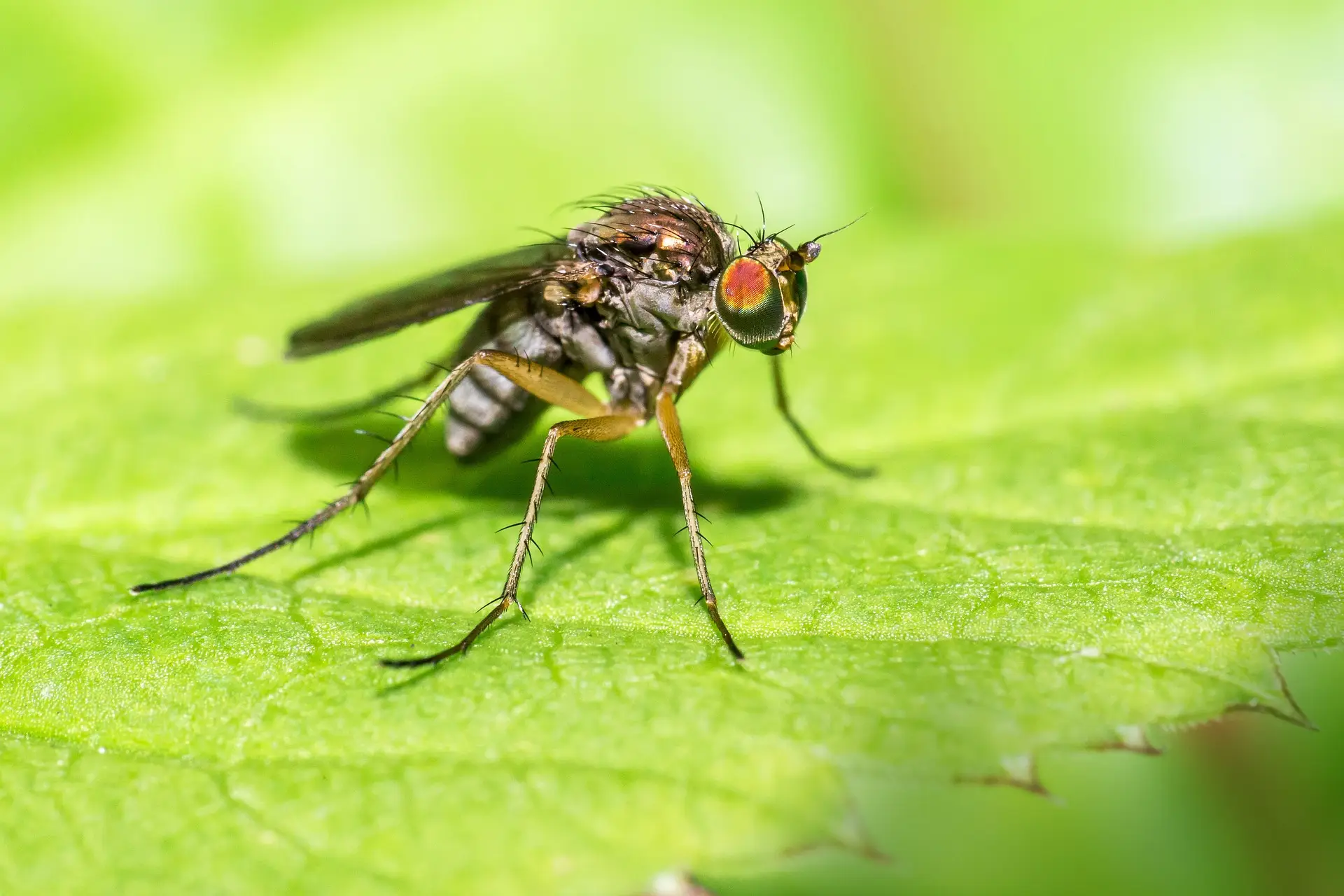The Long-legged Fly (Dolichopus ungulatus) is a member of the family Dolichopodidae, known for its distinctive long legs and metallic body. These flies are often seen in various habitats and play important ecological roles. Here is an overview of Dolichopus ungulatus:
Appearance:
- Size: These flies are small, typically around 5 to 7 millimeters in length.
- Coloration: They have a shiny, metallic green or blue body, which can also exhibit bronze or copper hues.
- Body Structure: The body is slender with long, delicate legs that give the fly its common name. The wings are clear, sometimes with slight dark markings.
Habitat:
- Preferred Habitats: Long-legged flies are found in a variety of habitats, including wetlands, forests, meadows, and gardens. They are often seen near water sources like streams and ponds.
- Geographic Range: This species is widely distributed across Europe and parts of North America.
Behavior:
- Feeding: Adult long-legged flies are predatory and feed on smaller insects and arthropods. They play a role in controlling pest populations. Some species also feed on nectar.
- Flight: They are agile fliers, often seen darting and hovering around vegetation.
- Activity: These flies are diurnal and are most active during the daytime, particularly in warm weather.
Life Cycle:
- Eggs: Females lay eggs on or near the surface of moist soil or decaying organic matter.
- Larvae: The larvae are also predatory and feed on small invertebrates in the soil or leaf litter. They are elongated, legless, and have a distinct head capsule.
- Pupation: Pupation occurs in the soil or within decaying plant material. The pupal stage is typically brief, lasting a few days to a couple of weeks.
- Adults: After emerging, adults continue the cycle, feeding and reproducing during the warmer months.
Ecological Role:
- Predation: As predators, both adult and larval stages help control populations of smaller insects, contributing to ecological balance.
- Pollination: While primarily predatory, some adult flies visit flowers for nectar and can act as incidental pollinators.
Conservation Status:
- Population: Long-legged flies are generally not considered threatened and are common in suitable habitats.
- Threats: Habitat destruction and pollution can impact local populations, but these flies are adaptable and can thrive in various environments.
Interesting Facts:
- Mating Displays: Males often engage in elaborate courtship displays, which can include waving their long legs and performing aerial dances to attract females.
- Sensory Adaptations: These flies have excellent vision, aided by their large, compound eyes, which help them detect prey and avoid predators.
- Speed and Agility: Their swift, darting flight patterns make them effective predators and difficult for prey to escape.
In summary, the Long-legged Fly (Dolichopus ungulatus) is a small, metallic-colored fly known for its predatory habits and ecological importance. Common in various habitats, these agile insects contribute to pest control and occasionally pollination. Their presence indicates a healthy ecosystem with a diversity of insect life.
Visited 914 times, 4 visit(s) today
Views: 2353
Subscribe to the newsletter:
